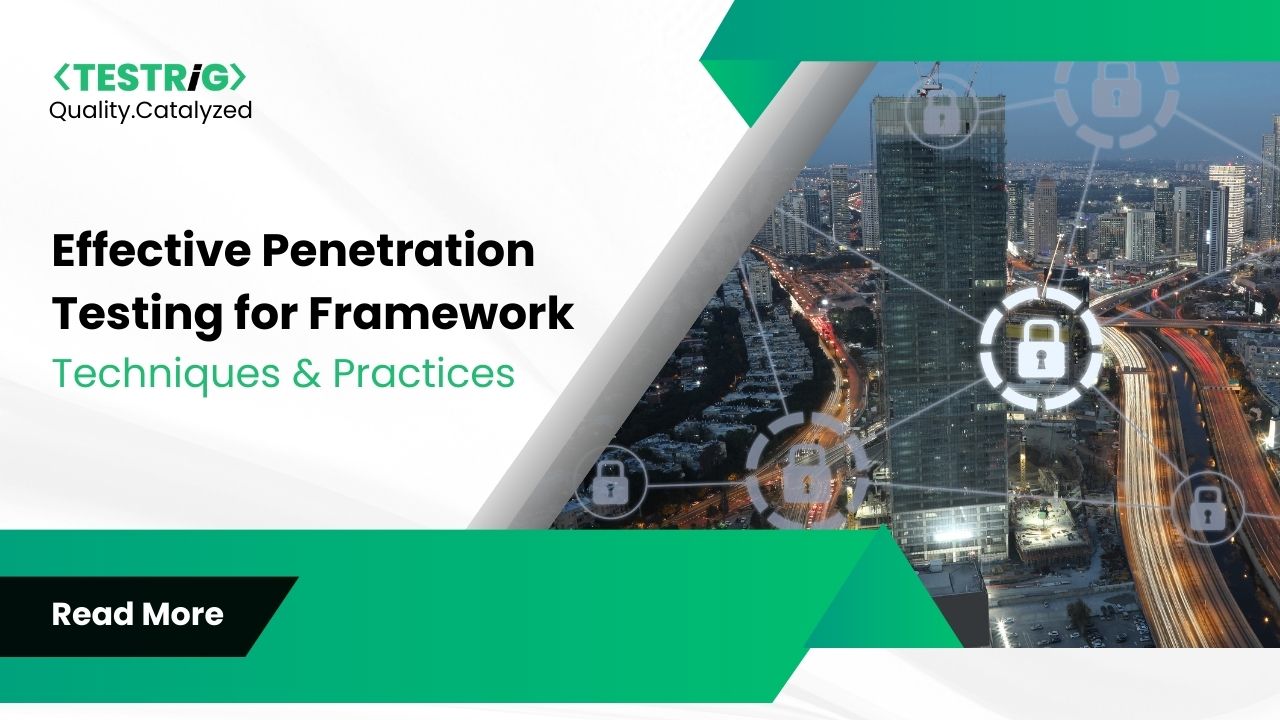Implementing a Robust Penetration Testing Framework: Key Techniques and Best Practices
 Vijayashree Shinde
Vijayashree Shinde
In an era where cyber threats are increasingly sophisticated and pervasive, organizations face mounting pressure to safeguard their digital assets.
According to a recent study, 83% of organizations experienced a successful cyber-attack in the last year, highlighting the urgency for proactive security measures. This reality underscores the need for strategies like penetration testing to identify and remediate security weaknesses before they can be exploited.
Penetration testing, or ethical hacking, simulates real-world attacks on an organization’s systems, networks, and applications. By assessing the security posture from an attacker’s perspective, organizations gain valuable insights into their vulnerabilities. This proactive testing method allows for the identification of weaknesses and the implementation of corrective measures, ultimately enhancing overall security.
In this article, we will delve into key techniques and best practices for implementing a robust penetration testing framework. These strategies enable organizations to effectively evaluate their security defenses and enhance their cybersecurity against potential threats.
Understanding Penetration Testing
Penetration testing, often referred to as ethical hacking, involves a systematic approach to evaluating the security posture of an organization. It encompasses various types of testing, including:
- Black-Box Testing: The tester has no prior knowledge of the system, mimicking the perspective of an external attacker.
- White-Box Testing: The tester has full knowledge of the system, including architecture and source code, allowing for a more in-depth analysis.
- Gray-Box Testing: A hybrid approach where the tester has partial knowledge of the system, providing a balanced view.
Key Techniques in Penetration Testing
- Reconnaissance and Information Gathering
The first step in penetration testing is reconnaissance, where testers gather intelligence on the target. This includes active and passive techniques such as DNS queries, WHOIS lookups, and network mapping using tools like Nmap. Social engineering tactics may also be employed to collect information from employees, simulating real-world attack scenarios.
- Vulnerability Scanning and Enumeration
In this phase, automated tools like Nessus or Burp Suite are used to conduct vulnerability scans across the network and applications. Testers enumerate services, open ports, and running software versions to identify weaknesses. This process often involves analyzing the output to determine potential entry points for exploitation.
- Exploitation
The exploitation phase involves leveraging identified vulnerabilities to gain unauthorized access or escalate privileges within the system. This can be done using frameworks like Metasploit, where testers execute payloads to demonstrate the potential impact of vulnerabilities. The focus is on mimicking real-world attack methods to assess how far an attacker could penetrate.
- Post-Exploitation
After successful exploitation, testers assess the extent of access gained. This involves lateral movement within the network, privilege escalation, and data exfiltration attempts to evaluate the organization’s incident response capabilities. The findings highlight the potential risks of a successful breach and inform the necessary remediation steps.
- Reporting and Remediation
A thorough report is generated to document the findings from the penetration test. This report should include a detailed analysis of vulnerabilities, the methods used to exploit them, and clear recommendations for remediation. It serves as a roadmap for improving security measures and should be presented to relevant stakeholders for effective follow-up.
Best Practices for Effective Penetration Testing
- Define Clear Objectives
Establish clear objectives for the penetration test by identifying the scope and desired outcomes. This alignment ensures that testing efforts focus on the organization's most critical assets.
- Engage Qualified Professionals
Utilize certified penetration testers with recognized credentials, such as OSCP or CEH. Their expertise in current attack vectors is vital for identifying complex vulnerabilities.
- Establish a Testing Schedule
Regularly scheduled penetration tests should be part of the security strategy. Aim for annual or biannual assessments, especially after significant system changes.
- Create a Controlled Testing Environment
Conduct tests in a controlled environment to minimize disruption to business operations. Staging or development environments should mirror production systems for safe testing.
- Incorporate Continuous Testing
Integrate automated security testing tools into the development lifecycle (DevSecOps). Continuous testing allows for real-time vulnerability assessments and early detection of issues.
- Document and Communicate Findings
Thoroughly document findings and create detailed reports outlining vulnerabilities and recommendations. Clear communication with stakeholders ensures timely remediation actions.
- Follow Up on Remediation
After addressing vulnerabilities, conduct follow-up tests to verify remediation effectiveness. This iterative process helps maintain a robust security posture over time.
- Stay Updated with Threat Intelligence
Regularly update knowledge on emerging threats and vulnerabilities. Engaging with cybersecurity communities keeps testing methods relevant and enhances overall strategies.
Conclusion
Penetration testing is an essential pillar of any effective cybersecurity strategy, and it forms a crucial part of comprehensive security testing services. Organizations can significantly enhance their defenses against malicious actors by systematically identifying and addressing vulnerabilities.
It’s crucial to remember that cybersecurity is not a one-time effort; it requires ongoing diligence. Regular penetration testing serves as a proactive measure, enabling organizations to stay ahead of potential threats and adapt to the ever-evolving landscape of cyber risks.
At Testrig Technologies, we are dedicated to being your trusted partner in cybersecurity. As a leading software testing company, we specialize in comprehensive security testing services tailored to your unique needs. Contact us today to fortify your cybersecurity defenses and protect your valuable digital assets!
Subscribe to my newsletter
Read articles from Vijayashree Shinde directly inside your inbox. Subscribe to the newsletter, and don't miss out.
Written by
